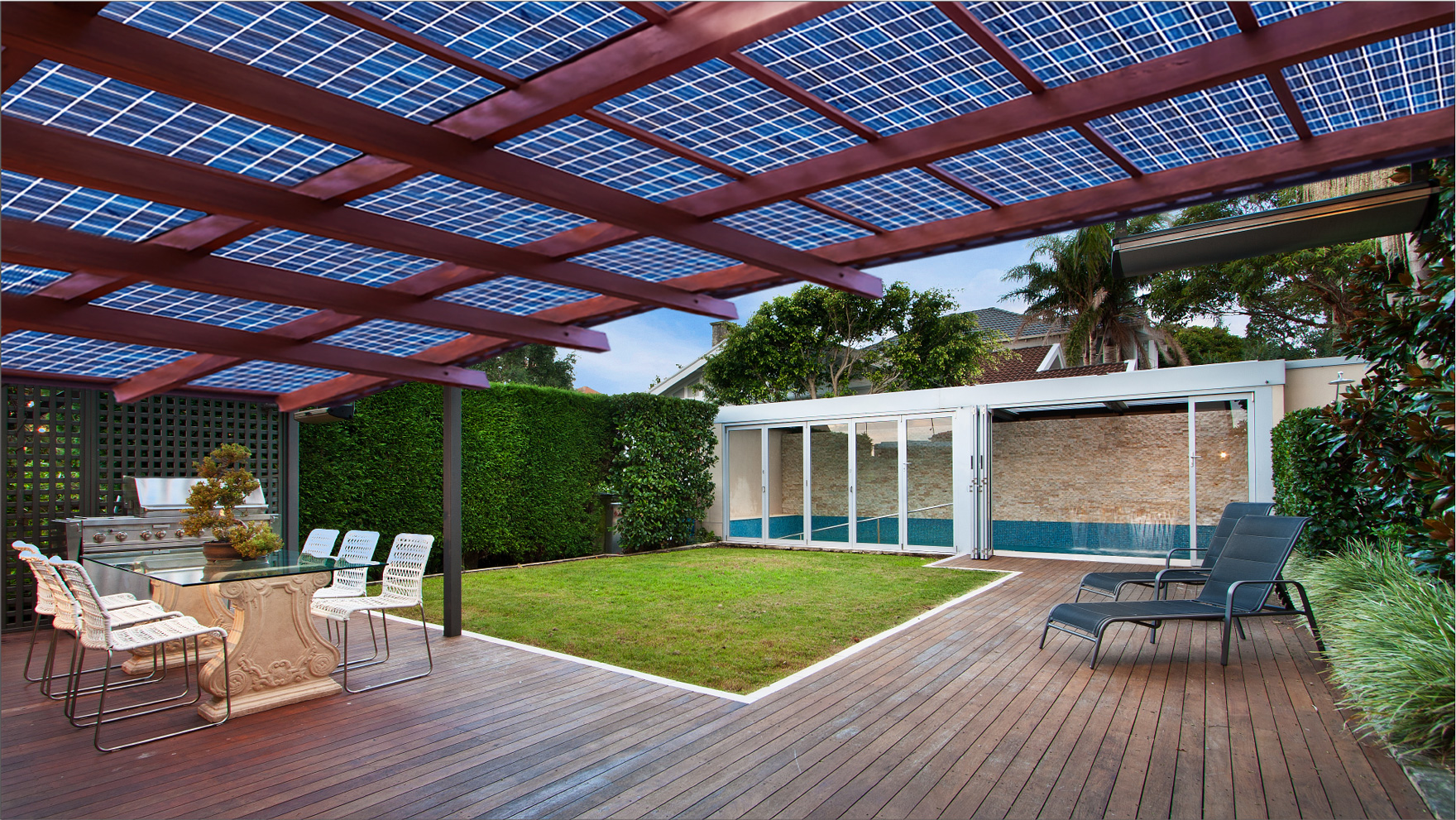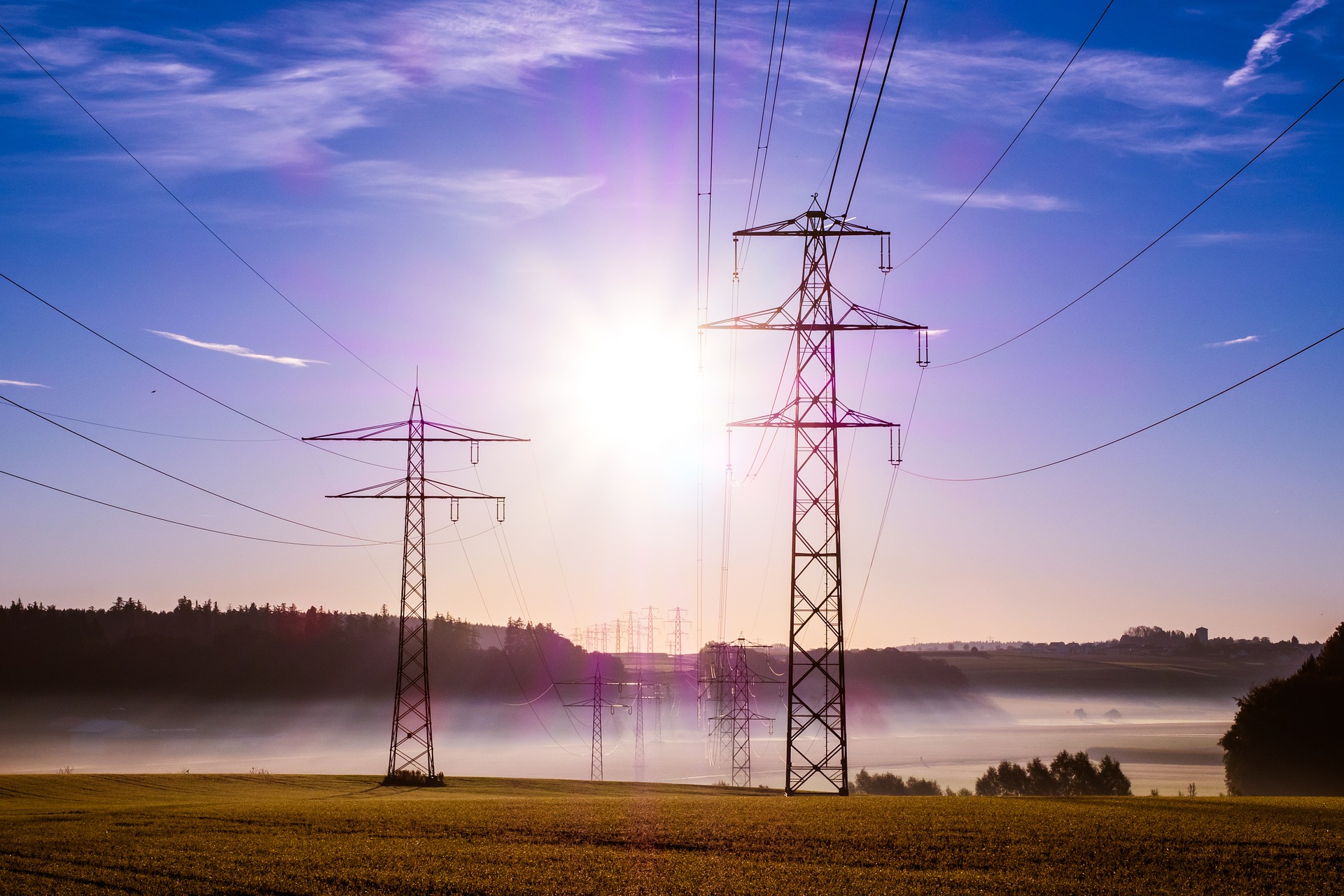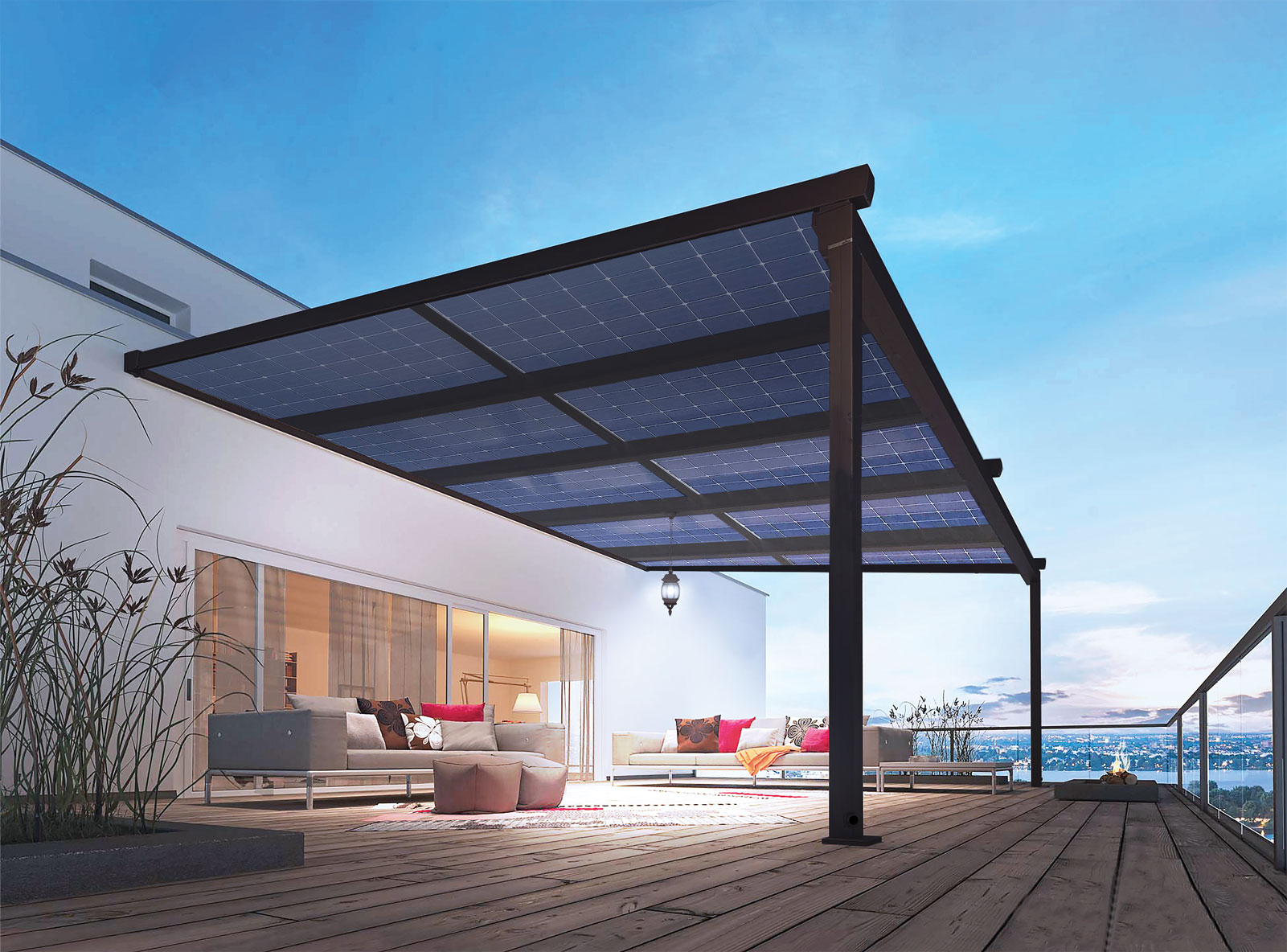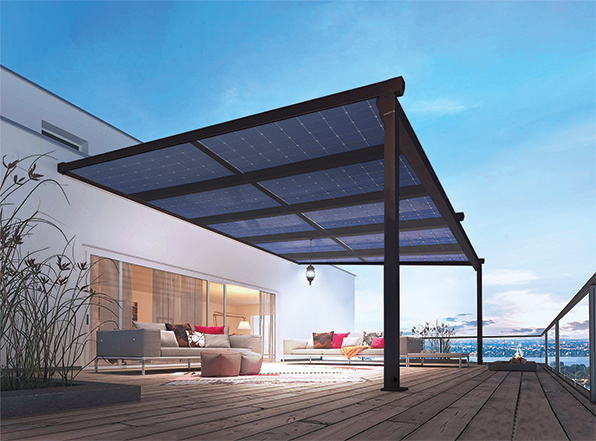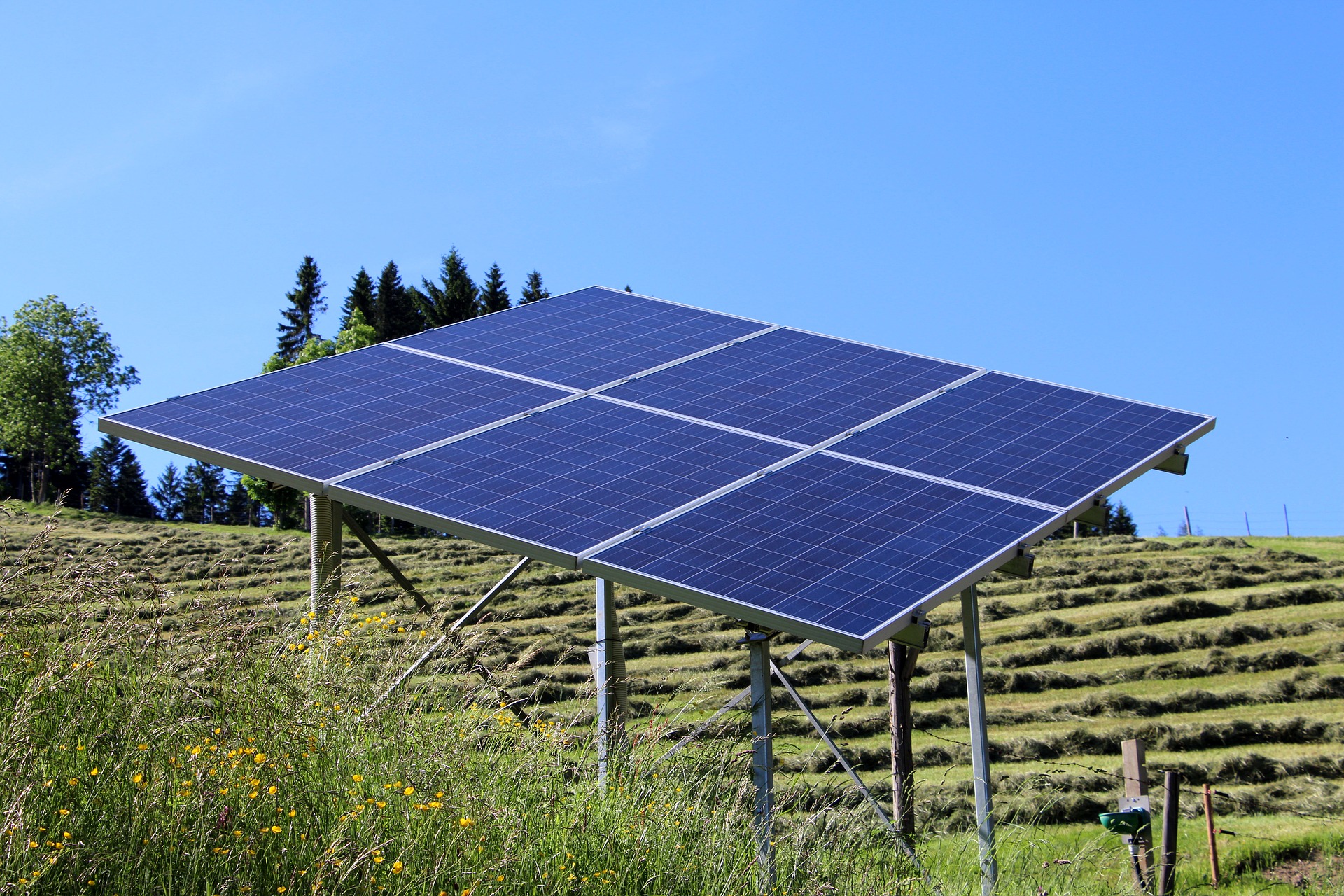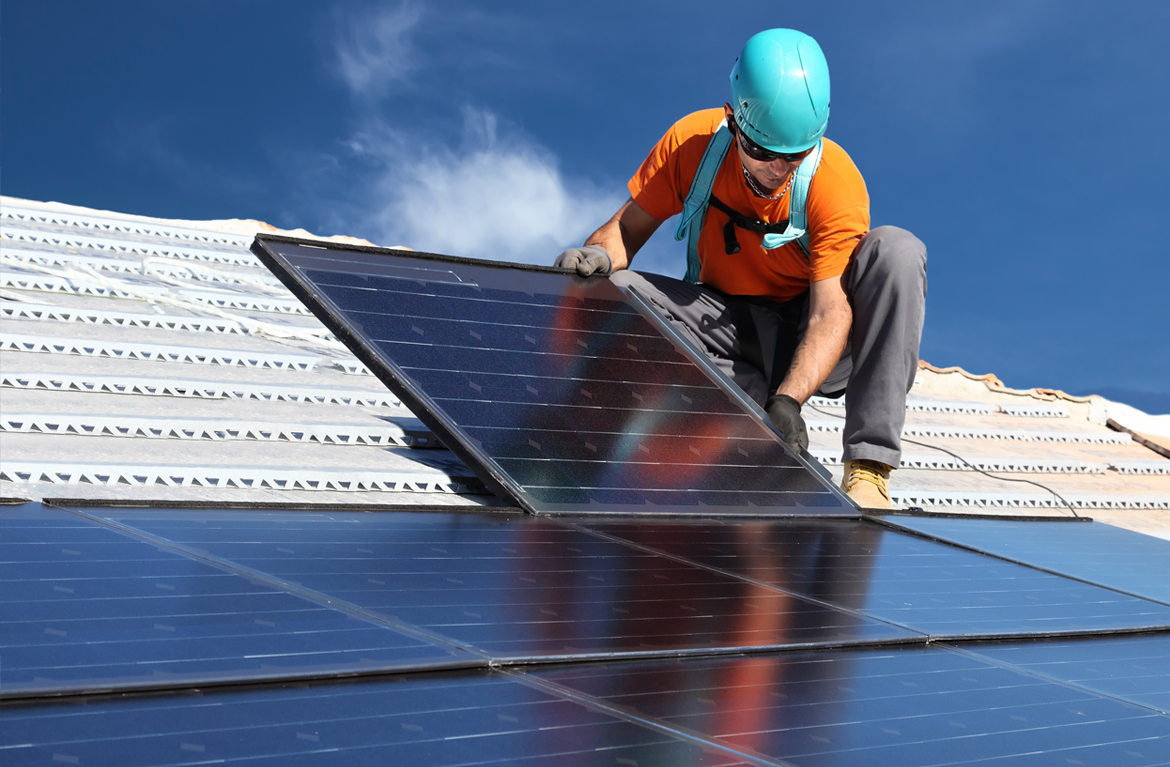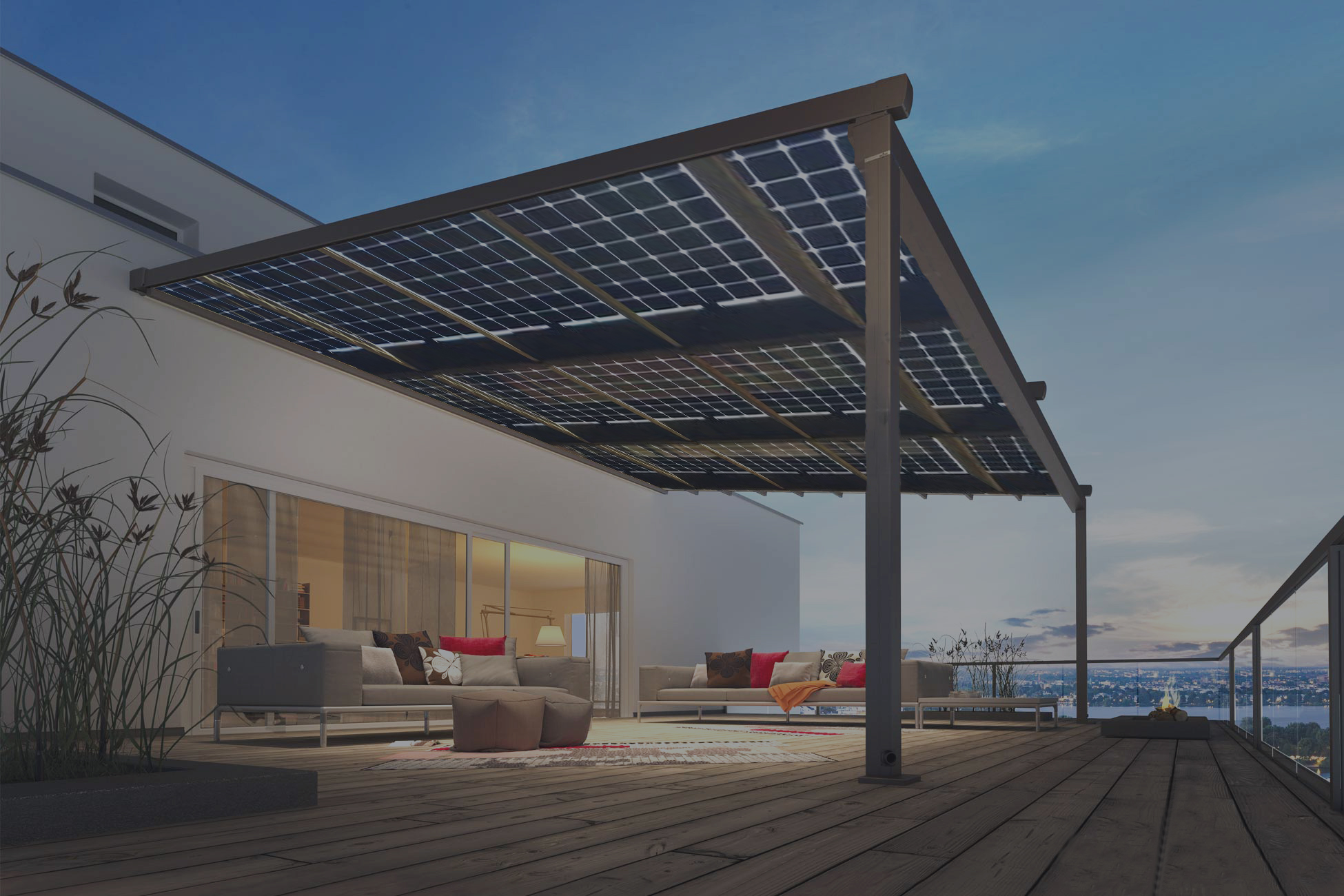How Bundling Scheme is Going to Impact Solar Companies in India
The Bundling Scheme is a plan to sell renewable energy (RE) and thermal power in a bundle so that end users can get uninterrupted supply of power. Bundling solar power was first introduced by the government in the first phase of Jawaharlal Nehru National Solar Mission (JNNSM), in the year 2010.
What is bundled solar energy?
Bundled solar energy means combining solar power with the power from the government’s unallocated quota, generated at National Thermal Power Corporation (NTPC) coal-based stations, which was comparatively cheaper. Solar power would be purchased by NTPC Vidyut Vyapar Nigam Limited from developers, which would then be combined with cheaper coal-based power. The price of this was set by the Central Electricity Regulatory Commission (CERC) and then sold at the reduced price to distribution companies. Reduction in the price of solar directly results in cheaper power, reducing the impact on them. At the same time this will also benefit the developers, since they would receive higher tariffs.
How does it work?
In the first phase, the cost of bundled solar power was successfully lessened to INR 5/kWh. The ratio of coal to solar power was kept at 4:1. A total capacity of 718 MW was commissioned under Phase 1. However, bundling faced a hurdle due to India’s coal production being extremely slow and unallocated coal not being available in abundance. Selecting solar power projects under various central schemes was proposed in the second phase. This is where the Viability Gap Funding Scheme was introduced, which is being implemented through the Solar Energy Corporation of India (SECI). This scheme specifically aimed to solve interruption in power supply and low capacity utilisation of solar power plants and make them appealing for state-owned power DISCOMS.
In this scheme, at least 51% of the annual energy supplied has to be Renewable Energy. The balance would then be drawn from thermal power sources.The generator, which will have the option of selecting the type of RE and mix and decide upon the usage of Energy Storage System (ESS). The tariffs for RE will be quoted by bidders as a composite single tariff for bundled energy. The scheme is the need of the hour for state-owned DISCOMS because they are drowning in debt. They are delaying payments to renewable energy companies. MNRE has said that the scheme will enable them to purchase power at competitive rates to meet their deficits.
What is the grid-tied solar system?
The impact of the bundling scheme cannot be viewed alone but in conjunction with other schemes. The bundling scheme was introduced to facilitate grid-connected solar power generation. A grid-tied solar electrical system is a network of power lines connecting users of electrical energy and producers of electrical energy. The home solar panel system is linked to the local power utility company’s electrical grid. Grid-connected projects could be ground-mounted PV or rooftop PV.
India aims to increase solar usage up to 100 GW by 2022. It is essential to take important steps to achieve this. There is a huge need to convert solar and bundle into usable electricity through panels. The infrastructure requirements for solar parks and the transmission of this power into the national grid must be met.
Manufacturing of solar panel systems is also extremely poor in India. In 2018, the government made a significant policy to impose the Safeguard Duty of 25% on Solar Imports for two years, after which it would be phased down. This was meant to encourage Indian companies of solar energy involved in manufacturing. But it was not as effective as hoped. Imports did drop due to slower capacity building in India, but not because of a rise in domestic sales. Indigenously made solar panels and cells constitute just 15% of Indian solar projects. A manufacturing solar company in Delhi, or elsewhere faces stiff competition from Chinese and Malaysian manufacturers despite the safeguard duty. Therefore, even though bundling has attempted to push the usage of solar while diminishing the need for expensive thermal, the Indian solar companies still have to bear the brunt of expensive machinery.
Solar partnering by DISCOMS is a part of solar push by the government. Rooftop owners are licensed, and developers are chosen through a competitive bidding process that is done by DISCOMS. For usage of their rooftop, solar panel system owners are given a monthly rent or credit on their electricity bill. A three-way agreement between DISCOMS, rooftop owners and solar developers are made for a period of 20-25 years. The developers would own and operate the solar panel system while roof owners will to host the solar panels. The DISCOM agrees to buy the power at a fixed rate. All owners have to do is to calculate the estimate of the power generated using a solar rooftop calculator.
The solar partnering model is good for consumers who want roofless solar or have to subscribe for a monthly fee. They get part of their electricity at the predetermined solar tariff. The government has also announced a capital subsidy on rooftop solar installations. This means that the solar system for home price would be considerably reduced. This is already applicable for many solar home systems in Haryana.
Conclusion
A policy where users can feed the electricity back into the grid will make solar penetrate at the grassroots levels. It would also be a positive move for the solar companies listed in India. Greater accessibility of solar would mean an increase in demand. Bundling would solve the issues of irregularity, since solar is not always reliable, and yet solar companies will be making a profit from this hybrid scheme since the push for solar has only just begun and will continue to grow.
Why would you want to make your home a Solar Home
Our decisions and actions as humans have completely changed the demography of the environment today. Most activities have brought about direct implications at an unprecedented rate in the depletion of natural resources. The earth has become 1.62 degrees hotter since the 19th century, all as a direct result of greenhouse gases leading to global warming.
With hotter temperatures, melting glaciers and rising sea levels concerning us all, more and more people are finally switching to an eco-friendlier way of living by choosing effective and sustainable options for themselves and the environment.
Combating climate change has made its way through to our consciousness. Awareness is spreading at a more grassroots level, and what better way than to start with our own homes. While saving water, reducing waste or managing it effectively is important, it is highly essential to switch to a lifestyle that consumes lesser energy and is more friendly to the environment.
Solar-powered homes bring about a good change when it comes to fighting the climate crisis. To begin with, installing solar panels in home is not only affordable as an alternate source of energy but are also powerful tools while looking for sustainable options.
How does solar energy for homes work?
As sunlight falls onto a solar panel, it is absorbed by the photovoltaic cells on the panel. The cells comprise of silicon semiconductors that convert solar energy into electric energy. The generated electric energy is in the form of DC, which charges the solar power battery, which also acts as a storage box to store electricity when there’s no sunlight. The generated DC is then converted into AC using an inverter, which is then directly supplied into the mains of a house.
Benefits of solar energy
Environmentally viable
A solar-powered device uses a natural and renewable energy resource, that is the sun, unlike other regular electricity-powered devices running on fossil fuels. Burning of fossil fuels depletes non-renewable energy sources, adds to air pollution and can also turn out to be quite expensive.
Even if you’re using hydroelectricity to generate power, water is present in the ecosystem in a scalable amount; exploiting or overuse of water can lead to scarcity of water overall. Solar homes fit the bill perfectly in this context by not being harmful to the environment and also not exploiting the earth’s already diminishing resources.
Reduces expenses and convenient
Solar power plants works best during the summer months when the sun is at its peak. Also, summer months indefinitely use more electricity to power air coolers or air conditioners. Think solar-powered air conditioners- an option that not only lets you save on the massive figured electricity bill but also does not get affected by power cuts that are so frequent in India during the summer months.
Though currently, solar powered energy accounts for only 1 per cent of electricity generation. However, according to NASA, almost 27 per cent energy will be generated using Solar power by 2030.
Has a positive social impact
Switching to solar power in your house can be quite innovative in a society where people are not fully aware of the adverse effects of climate change or the rapid depletion of natural resources. Not only can you create awareness but also “be the next big thing” among your family and peers by setting an example for others to follow.
Importance of solar homes in India
A staggering 240 million population of the country still lives without 24/7 supply of electricity; power consumption, however, is only on the rise regardless. Choosing green energy and alternate options to power villages, towns or cities is now the way to go for millions of people in India.
The climate of this country makes solar energy a very viable option; India has almost 300 days of sunlight which makes it appropriate for direct sunlight to be converted into consumable forms of energy. Solar energy seems to be the ideal way forward to bring in growth and sustainability at the same forefront, thus, making India one of the trendsetters in this innovative field.
Solar power system is ideally suited for private homes. While converting houses into solar-powered homes, various factors that must be kept in mind, which includes the geographical terrain of the area, the region of your house, the location and direction where solar panels can be fit, the panel efficiency, and so on.
Power generation from 1KW solar system
A 1KW solar panel can produce around 3-4.5 KWh of electricity in a day, which of course depends on the number of hours of sunlight, the season or other relevant weather conditions. This number varies depending on what time of the year it is, however on an average the number can go up to 1100-1600 KWh of electricity in an entire year.
Area required for 1KW solar system
A 1KW solar panel requires about 80 to 100 sq. ft of area for installation within a non-shadow area to receive maximum exposure to the available sunlight.
Conclusion
Solar power not only converts but also stores energy. In the upcoming years, this will play a significant role in making renewable energy a substantial source of power while also reducing the costs. The future holds not only solar-powered homes but also vehicles that depend on renewable forms of energy. The changing infrastructure of how we use energy and what defines as a smart, environmentally friendly choice will lead to a growth in the same. As the world hopes to become more sustainable to save this planet, support of the governments is the boost needed. Letting developers and innovators in this section find visibility to share their ideas is essential. At the same time, government-led projects must have a transparent process in place with a definite pipeline which encourages people to adopt solar energy even further.
Solar Subsidies in India: Residential Segment
In our current battle with climate change, the most sought-after combat weapon we have is to switch to a clean, renewable and inexhaustible form of energy. India is a country that has ample potential in terms of solar energy, which just about fits the bill when we talk of an alternative source of energy. However, the only challenge that remains here is its efficient utilisation in a cost-effective way.
In this aspect, recent initiatives and developments by the Central Government as well as the State Nodal Agencies (SNAs) include solar subsidies to encourage the use of solar energy.
Solar schemes in India
The development of solar energy was recognised as a national mission after the National Action Plan for Climate Change of 2008. In the year 2010, the Jawaharlal Nehru National Solar Mission (JNNSM) was announced. The aim being establishment of India as a solar leader by the year 2022 with global recognition.
The whole idea of launching a solar subsidy scheme revolved around not only switching to a renewable source of energy, but also indirectly reducing the burden on thermal power plants. Another objective was to minimise the rising electricity bills.
The Ministry of New and Renewable Energy (MNRE) came up with a scheme that offered financial support to set up solar power plants in various states. Later in the year 2015, the Government of India introduced Ujjwal Discom Assurance Yojna (UDAY). This would provide financial assistance in the power sector and work towards the development of renewable sources of energy. But most importantly, it will improve the energy efficiency and overall power conservation.
The next initiative was a major step towards the same with the Solar Energy Corporation of India. It consisted of implementing a large-scale rooftop scheme in 16 cities- big and small, across India. The National Clean Energy Fund (NCEF), offered a subsidised rate of 30% on the installation costs for states across the country. An exception was made for the states of Sikkim, Uttarakhand, Jammu & Kashmir, Himachal Pradesh and Lakshadweep which fell under a selected category in the rooftop solar scheme, and could avail a subsidy of 70% of the benchmarked installation cost.
The main objective of this government initiative was to offer a solar subsidy scheme so that both individuals as well as the organisations are benefited from the solar energy systems at a reduced capital cost.
Solar panels for home
There are numerous benefits of installing solar panels on roof. To begin with, they are extremely suitable for the Indian climate and geography. The fact that the panel installation doesn’t demand extra space and has a service life of over 20 years is a huge attraction and a win-win!
The average cost of installation of a Rooftop PV system is Rs 60,000-70,000. In order to promote solar energy, the government pays 30% of the installation costs and also offers tax credits. So, customers only have to pay around Rs 42,000- 49,000 for the installation. A total of 40% subsidy can be claimed when the benchmark cost is higher than the cost of the unit.
In fact, the tariff rate for rooftop solar panels is 17% cheaper when compared to industrial or commercial tariffs.
Homeowners opting for rooftop PV systems are granted with Priority Sector Loans of up to 10 lakhs by national banks across the country. 60% of the entire cost of installation is eligible for a bank loan, while the remaining 40% is subsidised. This loan can be repaid over the next 5 years according to the interest rates set by the RBI.
The government offers more benefits for customers who install solar panels for home; they are eligible for incentives of Rs.2 per unit (generation-based) of electricity generated. Which means, a customer can earn up to Rs. 2,000-3,000 per annum.
Moreover, people can also opt to sell excess electricity according to the norms set by the government.
Apart from the solar subsidy, the choice of going solar is any day advantageous and a far more secure investment when compared against the fluctuating electricity prices. In the era of going eco-friendly, it is more of a responsibility than a mere choice to opt for an alternative source of energy that is also cost-efficient in the long run.
Indian Perception – before and after the introduction of subsidies
Solar panels for homes come with high installation costs at an initial level. This often leads to a strong hesitation amongst Indians towards installing them. However, it is a known fact that the maintenance costs are much lower, and can actually yield a high return on investment.
There is a steady shift after the introduction of government on solar systems. The shift is visible in industrial, commercial, as well as residential household sectors.
The awareness, has increased tenfold. The benefits of switching to solar energy along with tax credits, financial subsidies, loan options and other generation-based incentives are now laid out publicly by the government in all their solar subsidy schemes to promote and motivate people to make the switch.
As a result of the government’s efforts in driving the country towards a global leader in the solar energy sector. People are finally seeing the brighter side of solar energy. Solar energy is now a new dimension. It is a profitable investment rather than a cost that is incurred during installation. People are willing more than ever to step forward and be more responsible towards the environment.
How to Improve Unsteady Target Growth of the Rooftop Solar System in India?
India is one of the fastest-growing economies in the world. The country has a huge potential and the opportunities are ever-expanding. Being a populous country, the electricity consumption is ever increasing, but electricity has been one of the major hurdles for the country’s progress. The government and some private companies of solar energy are taking the initiative to produce electricity within the Indian territory. Being India the world’s third-largest electrical producer, the country is still struggling to provide electricity to every part of the country.
If we talk about the production of electricity in term of percentage, 65% of the electricity consumed in India is generated by thermal power plants, 22% hydroelectric power plants, 3% by nuclear power plants and remaining 10% from other alternative sources like solar, wind, biomass, etc.
The production of electricity with solar is less than 10%. Solar has a huge potential and can be used to produce energy equivalent to thermal and hydro. The world is changing and maybe it’s time to look at things from a different perspective. The country has huge potential but only if they make use of all the resources.
Rooftop Solar Trend in India
The solar trend of the west is slowly entering the Indian market. The government and the people of the country have finally started realizing the potential of solar power. The government of India has set a target of 175 GW of installed renewable energy by 2022 of which solar alone is expected to be the single largest component at 100 GW.
There are multiple things to improve and a lot of work to be done in different areas of energy production and energy consumption. To improve the unsteady target growth of the rooftop solar power system in India, people should be educated about solar.
Educate people about Solar Power
Educating people about solar is highly essential. They must be aware about the industry and the government support to the industry. A number of myths that have settled in the minds of the consumers have to be removed, the importance of a greener future to be explained and the number and amount of subsidies available to them to be told, only then will they be willing to go for solar.
Benefits
It is important to inform people about the following benefits of solar.
- A cost-saving secure investment with low maintenance cost.
- You get government support for the installation of solar power systems.
- It increases access to energy.
- You are making the world a better place by using renewable energy and reducing carbon footprints.
- Solar is suitable for the Indian climate.
Educating people will allow them to know more about the benefits, as well as the various procedures, enabling them in the process of mounting a solar panel.
Government Support
With India signing the Paris Agreement and pledging to reduce global climate change, the need for Solar has increased. The Solar industry has now started receiving ample of support from the government, in the form of subsidies and policies. Self-sufficiency in energy is the need of the hour and steps to achieve the same are being taken.
A higher push gradually, will further help the industry to flourish.
Conclusion
A renewable source of power supply, Solar, has great potential in a country like India. If used and implemented properly solar can the best power generating medium. With the correct government support and awareness, solar has a long way to go.
Why I chose HomeScape to get Solar Rooftop for my home
In the last couple of years, India has seen tremendous growth in solar rooftop installations across the residential and commercial segment. Although most of it can be attributed to the commercial and industrial segment, residential is also gaining the attention of the homeowners across India and they are more and more opting for residential solar systems. More and more people are becoming aware of the benefits of clean electricity generated by solar panels. Earlier during summers, power cuts used to bring the cities to a meltdown. But now, with expansion in the grid electricity network and installation of a rooftop solar system, power cuts got reduced by 30% in major cities. But, still India is a power deficit country, and we can’t rely on just grid-connected power to light our homes.
The question is, how as a homeowner, you can reap the benefits of a solar rooftop system. We talked to a few of the HomeScape customers and got a firsthand review of a HomeScape residential solar rooftop and how it changed their lives. By now, you must already be knowing about the advantages of solar power, now we are here to give you a sneak peek into our customers’ homes who are not only saving on their electricity bills but also getting additional benefits from HomeScape solar that none of the other solar rooftop players offer. Here are the top 3 additional benefits of installing HomeScape solar rooftop system that you don’t get from any other residential solar systems:
Beautify your homes along with savings in electricity bills
Atrium, the flagship HomeScape Solar is an elevated rooftop solar plant with Wood-Clad Pergola structure. Every atrium is custom-designed to enhance the beauty of your terraces. The premium looking wooden finish gives it an elegant look that makes it visually appealing even from a distance. That’s not it, if you are installing a ‘Grid Connected Solar System’ without a battery, you can observe up to 90% savings on your electricity bills. The electricity produced during the day is consumed for your daily usage and excess load is transferred to the grid. Hence, most of the daily electricity requirements are met by clean solar energy.
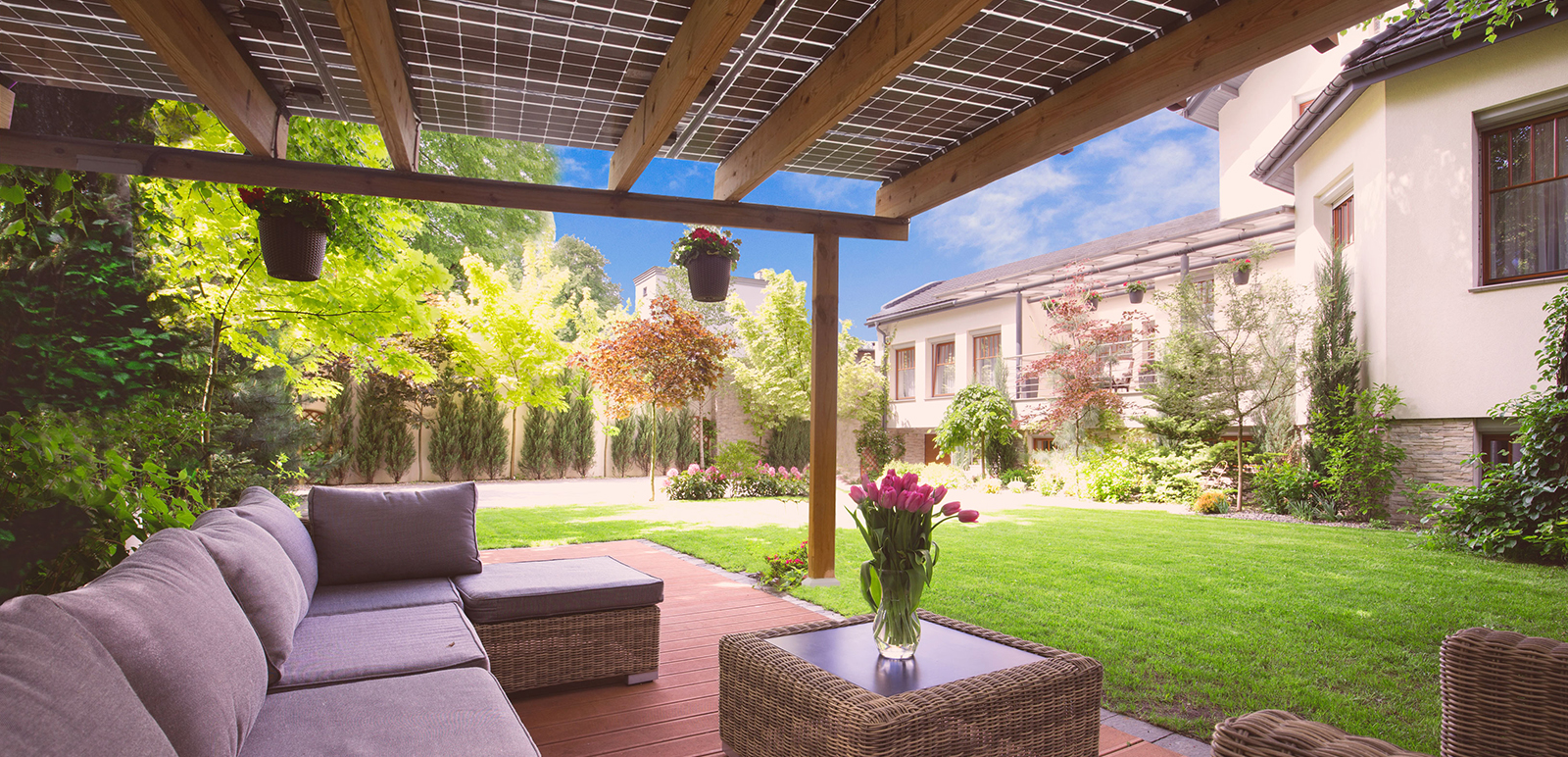
Enjoy high ROI and quality time spent with family
Typical risk-free investments in India (Fixed Deposits etc.) return around 8%-9% per year. A 10kW standard rooftop home solar system (Terra) returns up to 30% per year on the investment while Atrium returns up to 18%. With a life of 25+ years, a solar plant gives better returns than any risk-free investment available with us. Combine this with the possibility of spending quality time with family and friends. HomeScape Atrium gives you a lounge-like ambiance within the comfort of your homes and you can spend hours chilling under our aesthetically designed HomeScape pergolas.

Elevated Solar Rooftops insulates your roof from direct heat & give you an added seating space
Our elevated home solar systems provide better shade during the day, which reduces the heating of RCC roofs during the sunny days. The rooms tend to remain cooler which ultimately, leads to less electricity consumption. Also, the pergola gives an added seating space on your roof which you can utilize for gardening, kids project and recreation area.
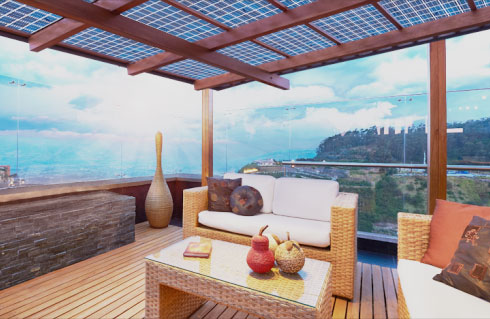
DIY Calculation Guide for 1 kW Solar System
The size of a residential solar system is defined by its peak power. e.g. a 1 kW solar system can produce 1 kW of power per hour on sunny days. kWh stands for kilowatt-hour. 1 unit of electricity implies 1 kW generated/ utilized in an hour. You need to install at least 3-4 solar panels based on watt peak in an array for the 1 kW solar system. 10kW solar systems are a great investment for homes with high levels of electricity consumption or businesses with relatively small electricity needs. You can calculate your plant size, area requirement and payback period by our DIY guide.
Calculate Solar System Capacity
The first thing to do is to find out how many units of electricity you are consuming on an average monthly. If you’re using 1400 kWh per month, let’s consider an average of 6 hours of sunlight per day, this implies you would need 1400 / 6×30 = 7.7 kW at least every hour, i.e. ~ an 8-10 kW system. If you have an idea of the available area on your rooftop, you can also check out our Solar Calculator. Let’s understand this by an example. A “10 kW solar system” means an array of solar panels that produce 10 kW for every hour of direct sunlight. So, a 10 kW system, in a location with 4 hours of direct sunlight, makes 40 kWh per day. Assuming 300 sunny days in a year, a 10kw system will generate 14,000 kWh annually which is equivalent to planting 450+ Teak trees and total savings of Rs 45 Lakhs over the lifetime.
Calculate Area requirement for Your Solar System
Parameters which determine the size of the Plant are as follows:
- Monthly Average Bill Peak load in summers & throughout the year
- Sanctioned Load
- Rooftop area or shade-free area
All these points are needed to be analyzed properly as the policies and guidelines of Govt vary state by state e.g. Policies for availing subsidy and Net Metering is different for different states. In Delhi, you can install a system equal to that of the sanctioned load. If you have a sanctioned load of 10 kW, you can install a system up to 10 kW. Similarly, in some states, the maximum capacity of the solar plant allowed is 90 % of the sanctioned load. For estimation purpose, 70% of rooftop area can be used for the panel’s installation. Certain solar panels in the market can use as high as 90% of rooftop area but have a much higher cost. As a thumb rule, you require 10 sq meter area for a 1 kW solar system capacity. Shading is another important factor which decides the positioning and size of the plant. The system should be facing south with a certain degree on the panels. For more details, you may refer to this video. You should look for a maximum area without shade for your solar system to work efficiently.
Calculate Payback Period for Your Solar System
Solar Energy is a renewable source of energy that is revolutionizing the way we generate power. Not just that it is a clean source of energy, but it’s a great investment that adds value to your property with a shelf life of 25 years and it is aesthetically beautiful. The total no. of years (time) by which the initial amount of money invested for the system will be recovered from the savings made is known as the payback period of a solar system. Let’s take an example – If you have invested Rs 5 Lakhs for a solar system that gives you savings of Rs 1 Lakh annually, this implies, in 5 years’ time, the profits have paid back your original investment. You can check exact savings in INR from the solar calculator, as explained before. Solar panel price in general ranges between Rs12,000 – Rs18,000 based on the type of solar panel and capacity in watts. The solar systems come with a warranty of 25 years. So, while calculating the ROI, the remaining 20 years gives you a profit of 18 – 20 Lakhs considering its shrinkage in performance annually. If we consider the Inflation of 5% in grid tariff annually, (Cost per unit going up to let’s say 5%) we make lifetime savings around Rs 45 Lakhs.
Advantages of Residential Solar Plant
With a hike in prices of non-renewable resources of energy like crude oil, coal, and petroleum arising due to rising demand and environmental sensitivity, we are set on the path of rising prices of electricity. The trajectory for electricity spot prices in India surged and registered a nine-year high in September 2018. The heavy costs pin down the middle class with heavy electricity bills. The power cuts are also a big issue, especially in rural areas and for small-scale industries leading to various development constraints. In these dire circumstances, residential solar system provide a solution to uplift the excessive pressure that human society lays on nature.
Following are the advantages of residential solar plants:
Financial Advantages
Significant Savings on Electricity Bills
Going solar can cut down the electricity bills drastically, by around 90% for home usage, thus diminishing a significant factor of the budget. A solar panel would convert the energy from the sun into electricity. An inverter would then convert the electricity produced by the solar panels from direct current (DC) to alternating current (AC) for being used in the house. A bi-directional meter would then measure the net energy used and produced. If there is excess energy being used, that energy would be transmitted to the electrical grid, for which it would record positive credits. If the energy requirement is more than the quantity produced, then it would record the excess energy that the grid would be supplying to the house, thus, negative credits. Net of the credits would be considered while the person pays the electricity bill. The resident can also opt for an Off-grid system. This system operates not with a grid but with a battery. The battery stores the excess energy generated during the sunny hours only to use it during the night or on cloudy days.
Low cost of maintenance
The cost of maintenance of the residential solar plant is minimal while the positives are immense; this being another reason for being a product with a high rate of investment. The life of a residential solar plant is 25 years, and for efficient working, the surface of solar panels for home need to be cleaned once in 2-3 weeks depending on the geographical area where your solar plant is.
Low Payback Period
Residential solar plants have a low payback period and thus are worth investing in. Saving on electricity starts from day one and depending on the design and cost of a residential solar plant, the cost is covered within 4 to 5 years, making it a product with a high return on investment.
Government’s Support
Solar power industry of India is developing at a very fast rate and India has become globally the lowest cost producer of solar power in June 2019 as per the report, Renewable Power Generation Costs in 2018 by IRENA. The Indian government has set the target of generation of 100 GW of solar capacity (including 40 GW from rooftop solar) by 2022, targeting an investment of US$100 billion. By the end of 2015, almost one million solar lanterns were sold in the country, reducing the need for kerosene; 1,18,700 solar home lighting systems were installed, and 46,655 solar street lighting installations were provided under a national program, and over 1.4 million solar cookers were distributed in India. In January 2016, Prime Minister Narendra Modi and French President François Hollande laid the foundation for the headquarters of the International Solar Alliance (ISA), that will be responsible for focusing on promoting and developing solar energy and solar products for countries lying wholly or partially between the Tropic of Cancer and the Tropic of Capricorn. The alliance of over 120 countries was announced at the Paris COP21 climate summit. These steps and statistics show clear support of government to the solar industry, enhancing the trajectory of growth, and strengthens the reason to believe in investing in the same.
Aesthetic Advantage
Homescape residential solar plant beautifies the roof with its aesthetic designs, thus the consumer not only contributes to lower carbon emission while saving more but also adds to the value of its house. Atrium by HomeScape is an elevated solar plant with Wood-Clad Pergola structure. It is custom-designed to enhance the beauty of your roof. Its premium wooden finish increases the aesthetics of your roof from a distance and close-quarters alike.
Environmental Advantages
The excessive pressure on natural resources acts as a threat to nature. Not just that, it has been long observed that generating power from thermal power plants using coal and petroleum produces harmful emissions which are again harmful to humanity and nature as it is increasing the global average temperature thus causing global warming. Using residential solar plant avoids carbon emissions thus generated from thermal power plants. Till date, Amplus Solar’s contribution to the sustainability is equivalent to planting 14 million matured trees absorbing carbon dioxide for 40 years, 12.19 million tons of carbon dioxide emission avoided, 12.19 million barrels of oil reduced and 1.5 million liters of water saved.
